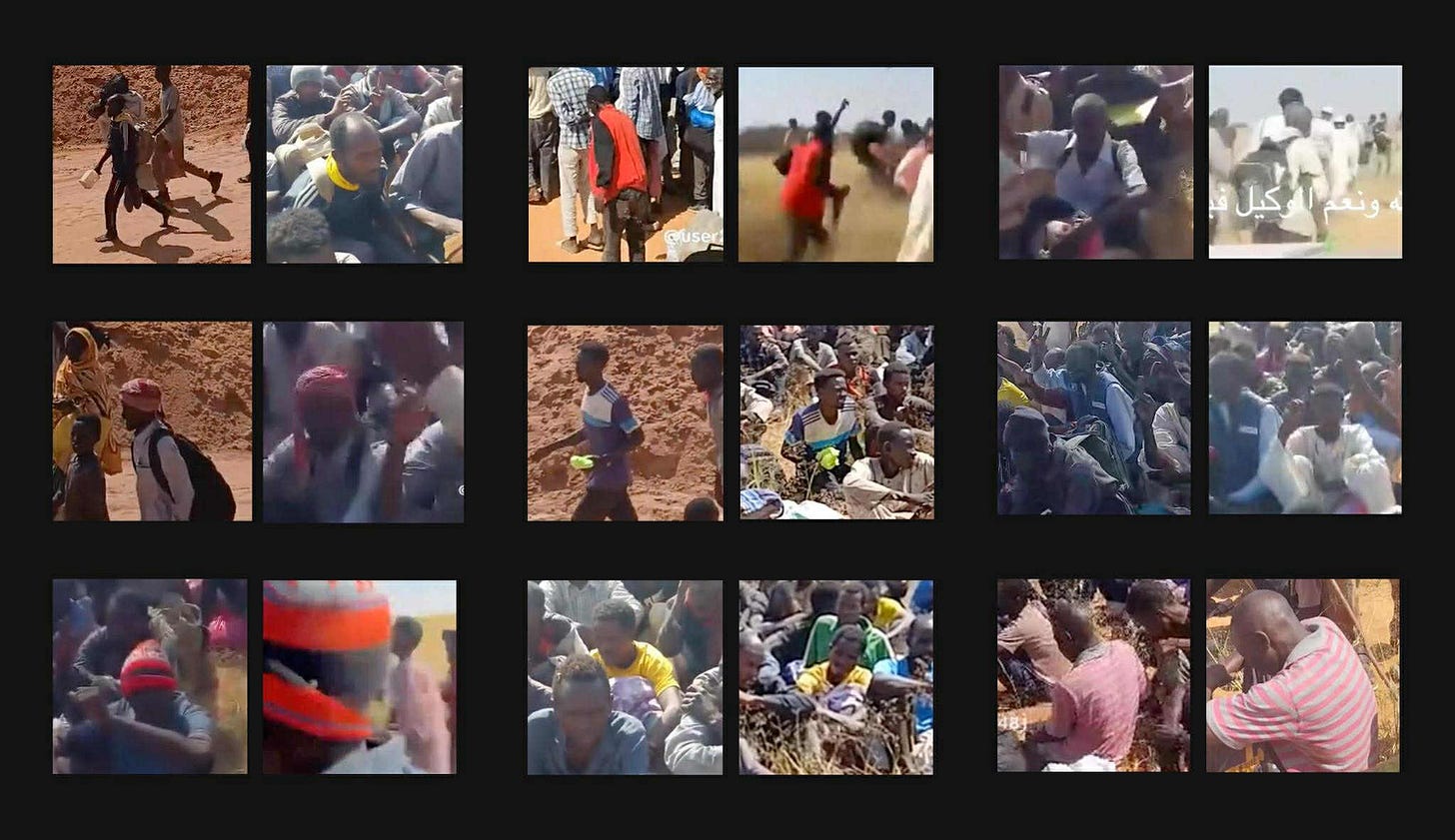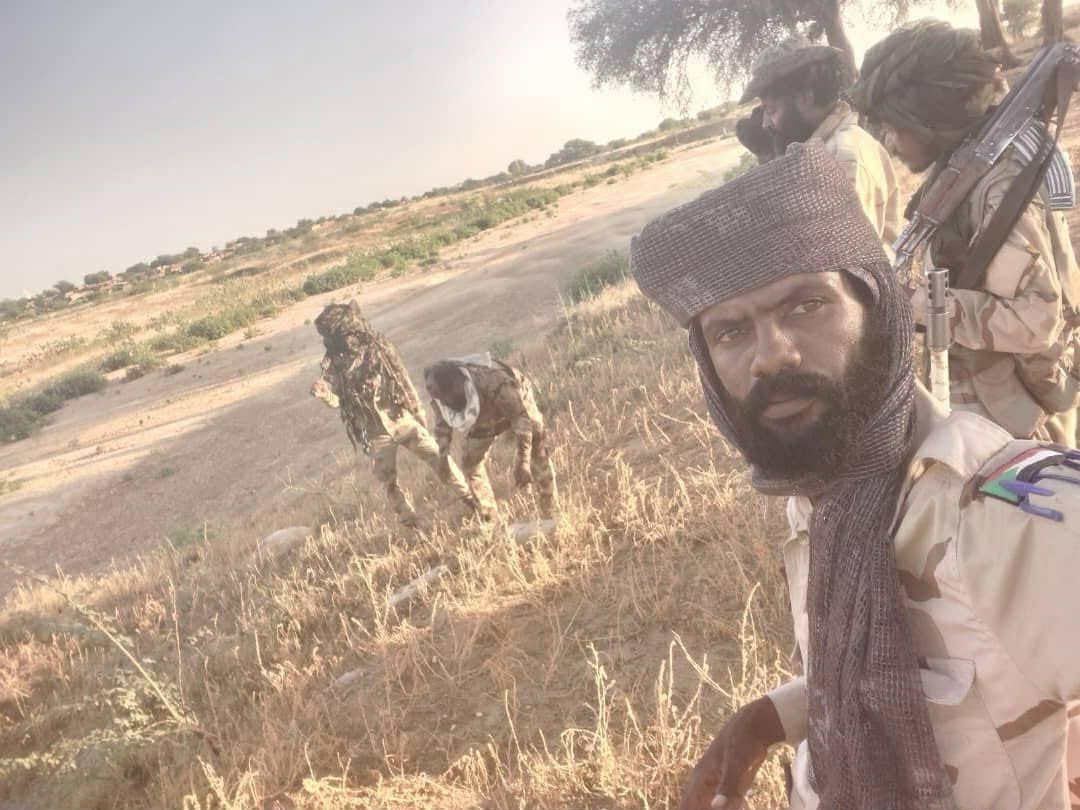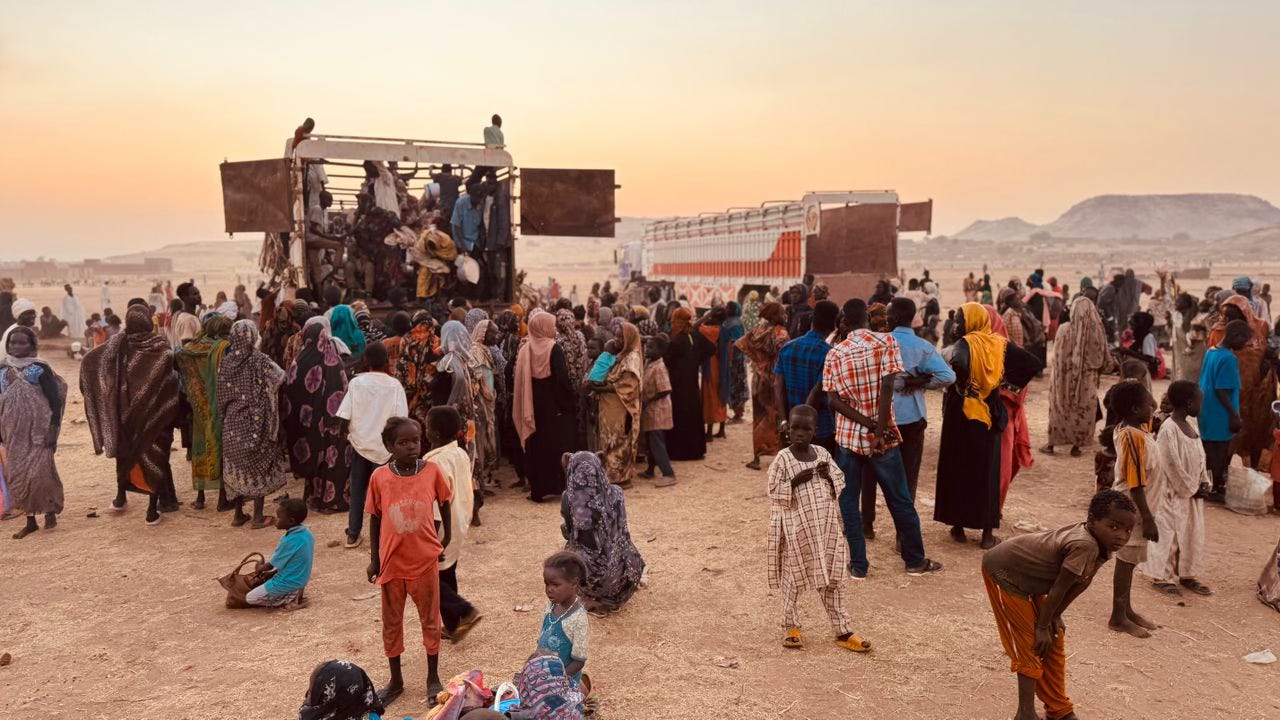Investigation: The Killing Fields of El Fasher
The fugitives were pursued and either killed or captured while few escaped
WARNING: This article contains depictions of graphic violenceSudan War Monitor / Lighthouse Reports / Skynews
El Fasher, the capital of North Darfur, is in recent days, the site of one of the most horrific massacres since the start of Sudan’s war over two years ago. According to fighters on the ground, the large-scale attacks are at least in part ethnically motivated. The rolling massacres and targeting of civilians has long been warned about by humanitarians in Sudan as a potentially catastrophic result of the Rapid Support Forces seizing the city. In a joint investigation with Sky News and Lighthouse Reports, Sudan War Monitor has firsthand testimony of high-level Sudanese Army officers fleeing the city ahead of the attack and compiled evidence of widespread crimes against civilians, including ethnic killings, house-to-house killing sprees, detention and harassment of civilians as they flee, and kidnap-for-ransom.
The city fell to the Rapid Support Forces (RSF) on October 26, 2025 after 18 months of bombardment and fighting between the RSF and the Sudanese Armed Forces and allied troops. The RSF seized the headquarters of the Sudanese Army’s 6th Infantry Division, the last military position held by SAF in all of Darfur. The seizure of the Army Headquarters cemented RSF’s hold of Darfur and set in motion a wave of killings targeting civilians on ethnic grounds as tens of thousands of civilians and fighters attempted to flee the city.
Homes and hospitals were raided, patients were wounded and killed, and many were executed in cold bloods – much of it was documented in trophy videos published by RSF soldiers touting their victory. As families fled on foot in an effort to reach humanitarian aid in the town of Tawila, hundreds were taken hostage, the men were separated from their families, and many were blackmailed for ransom.
Killing on the basis of ethnicity
Two sources from the Rapid Support Forces confirmed to Sudan War Monitor that the massacre was systematically carried out on the basis of ethnic motives, noting that the forces had planned in advance to target certain groups within the city.
One of the commanders who participated in some of the earlier attacks on El Fasher explained that the arrangements included helping some of those who were not on the list of targeted ethnicities to flee the city.
Arrangements also included removing non-Arab members of groups allied with the Rapid Support Forces and preventing them from entering the city. These men were reportedly gathered in nearby towns of Zamzam and Jago Jago to ensure that fighters would not intervene to stop the killings against their own ethnic groups or of their family and relatives.
Although estimates of the number of victims vary, RSF sources indicate that the death toll is at least 7,000 people, most of them civilians in the city.
According to these RSF sources, the killings took place in multiple locations inside and outside the city. Many were killed while trying to flee, while others were executed inside their homes, particularly in the First Degree neighborhood, which reportedly saw the highest number of victims.
Sources told Sudan War Monitor that up to seven or eight people were killed in each house in First Degree neighborhood, where many families were sheltering after fleeing fighting elsewhere in Darfur.
Early evacuation of important figures
Sudan War Monitor has learned that as the Rapid Support Forces closed in on their final offensive in El Fasher, high-ranking Sudanese Armed Forces soldiers and their allies strategically withdrew ahead of the carnage. There are conflicting reports about how the leaders left the city under a siege imposed by the Rapid Support Forces and many question whether SAF left tens of thousands of civilians to their deaths while saving their own troops.
A senior official in the Port-Sudan government, who requested anonymity, denied rumors of an agreement between the army and the Rapid Support Forces on the safe exit of the military leadership from the city, claiming that the withdrawing forces had conducted military operations that enabled them to open the road.
Of three groups of forces reportedly securing the roads, the first and second groups were able to leave safely. The third group – which included civilians fleeing – was hit by the Rapid Support Forces as it was leaving the city.
Despite denials, another source from the Port Sudan government said that the withdrawal from El Fasher did not begin when the Rapid Support Forces entered the city, but rather began earlier and lasted for about four days, during which those described as important figures and most of the armored vehicles and advanced weapons of the army and joint forces were evacuated, Small arms and some soldiers were left behind to face their fate in the city.
Pursuit of survivors
After SAF withdrew, the massacre did not remain limited to El Fasher but rather the Rapid Support Forces stalked survivors, attacking those fleeing the city on their way to Tawila, east of Jebel Marra.
Of a group of around 2000 men in civilian clothes that can be seen in a video, only 200 made it to the IDP-camps, sources in Tawila claimed. The others were chased by RSF motorcyclists and camel riders and killed, wounded or re-captured and detained, with their captors demanding huge ransoms for their release
A senior military source from the Rapid Support Forces claimed that the killing of civilians was in retaliation for the deaths of Rapid Support Forces members who had been killed, including General Ali Yaqoub Jibril, the former commander of the Rapid Support Forces in central Darfur, who was killed in El Fasher in June last year.
Ali Yaqoub’s image was used in many victory celebrations organised by the RSF and its supporters immediately after the fall of El Fasher in cities across Darfur and in African.
Sudan War Monitor is a collaborative of journalists and open source researchers tracking the events of Sudan’s war and the search for solutions. We’re building a platform to battle disinformation and warmongering and amplify the voices of victims, humanitarians and peacemakers.
The RSF’s gruesome trophy videos
Multiple reports have emerged of civilians being executed on camera by Rapid Support Forces soldiers in videos that have been published “celebrating” the RSF victory.
Many victims in the videos are wearing civilian clothing and being killed by known RSF officers, including Commander Al-Fatih Issa Idris, known as “Abu Lulu.” “Abu Lulu” appeared in more than one location. In the videos, he shot at people seated on the ground before killing them.
Videos widely circulated in the media and obtained by Sudan War Monitor/Sky News/Lighthouse Reports show that Abu Lulu killed many people in at least three locations.
On some occasions, Abu Lulu shot four people after talking and laughing with them, asking some of them if they knew him. When some of them replied by repeating his name, he said he did not have time for that and shot them.
In another video filmed near a group of burning military and civilian vehicles, Abu Lulu appeared with a large number of bodies behind him as he spoke to one of the wounded, who was lying on the ground. Then, Abu Lulu shot the man.
On October 29, 2025, a number of media outlets reported the arrest of Abu Lulu, accompanied by a video showing him handcuffed and being taken to a cell, likely in Shala Prison in El Fasher, according to a military source from the Rapid Support Forces. This came immediately after a lengthy speech by General Mohamed Hamdan Dagalo (Hemedti), commander of the Rapid Support Forces and head of the Nyala-based Foundation Alliance government, in which he announced the need to hold all those involved in the events in El Fasher accountable and announced the arrival of investigation committees formed for this purpose.
Despite the alleged arrest of one perpetrator, videos continued to emerge including one showing a Rapid Support officer shooting at people in civilian clothes lying in a trench surrounding the city. The shooter appeared to be deliberately hiding his face from the camera as he was killing.
The Rapid Support Forces also took several videos of large groups of men fleeing El Fasher on October 26. They were seated on the ground in different locations while racist insults were hurled at them, including being called “slaves.” The fate of these groups is still unknown, as only a very small number of them reached the relative safety of Tawila in eastern Jebel Marra. Out of an estimated 70,000 people who fled El Fasher, humanitarians say less than 10,000 people have made it to Tawila as of 3 November.
Kidnapping for ransom
Even for those who survive and escape the city, the road to safety is perilous and there has been an uptick in reports of kidnap-for-ransom by the RSF and their allies.
The 35-year old Abdel-Hamid Al-Hadi Abdel-Hamid managed to escape El Fasher on the morning of October 27 together with his wife. Outside the city RSF-soldiers stopped them, beat and took all their belongings. After that they searched him and his wife, even in their private parts. The horrors didn’t end there. “When we reached Gerny we joined around 300 – 400 families. The RSF selected around 18 people and shot them, then they asked us to bury those people. They took us to the school where again they came and selected people, young and elders and took them.” According to Abdel-Hamid there are still hundreds of people detained at the school.
The Rapid Support Forces are still holding a number of citizens in the land port area east of El Fasher, a large number of whom were captured in Gerny while on their way to Tawila and sent back as captives.
One citizen reported that the Rapid Support Forces are demanding a ransom for the release of one of his relatives, threatening to kill him if the ransom is not paid.
Video clips showed a number of detainees demanding that their families pay sums of money to the Rapid Support Forces. At least four cases were confirmed in which detainees appeared on camera demanding ransom. One of them was released after the amount was sent, while others were killed because they were unable to pay.
A short video was recorded of an elderly man with bandages on his leg and hand, demanding that his family contact the detainees to pay a ransom in exchange for his delivery to the Tabit area on the Nyala-Fashir road.
A video was posted on Facebook of Dr. Abbas Al-Sadiq, a professor of psychology at El Fasher University, urging one of his colleagues (Dr. Hadi) to pay the ransom as soon as possible, noting that the captors had given him only 10 minutes and that the matter was a matter of life and death.
In a recorded voice message, Dr. Malik Sabi, a history professor at the University of Zalingei, recounts his journey through the villages of Shagarat, where most residents are displaced, while Rapid Support Forces are present there. According to the university professor, he and a group of people gathered at a certain point in the trench west of El Fasher and then headed west, but they were fired upon in the Shagarat villages area. Some were killed while the rest fled in different directions, leaving him alone on a road he did not know.
According to Dr. Malik Sabi, who spent about four days between El Fasher and Tawila, he saw death several times while eating grass, only to find himself sold by his rescuers, who demanded a ransom or threatened to kill him if he did not pay. He also recounted witnessing the killing of three members of the Sudanese armed forces who were unable to pay the ransom before his eyes.
Malik Sabi said that after paying the ransom and on his way to the city of Tawila, he saw at least 37 bodies lying on the ground, some of which he recognized as having been killed recently. He said that they belonged to the people who were with them before they were shot and scattered in the Shagra area. He also pointed out that some of the bodies appeared to be somewhat old.
How You Can Help
Sudan War Monitor is an in-depth resource for tracking the world’s largest humanitarian crisis and the conflict that has caused it. We’ve been able to sustain and grow this initiative thanks to a global network of supporters. You can help by upgrading to a paid subscription, which gives you access to subscriber-only extras, as well as our full archive of reporting and analysis.
Other ways you can help:
📢 Forward our newsletters to colleagues and friends.
📲 Share our work on social media.
🔗 Link to Sudan War Monitor from your website or blog.
🎁 Purchase a gift subscription for someone else.
💳 Make a one-time donation.
✍️ Leave a thoughtful comment or testimonial.





